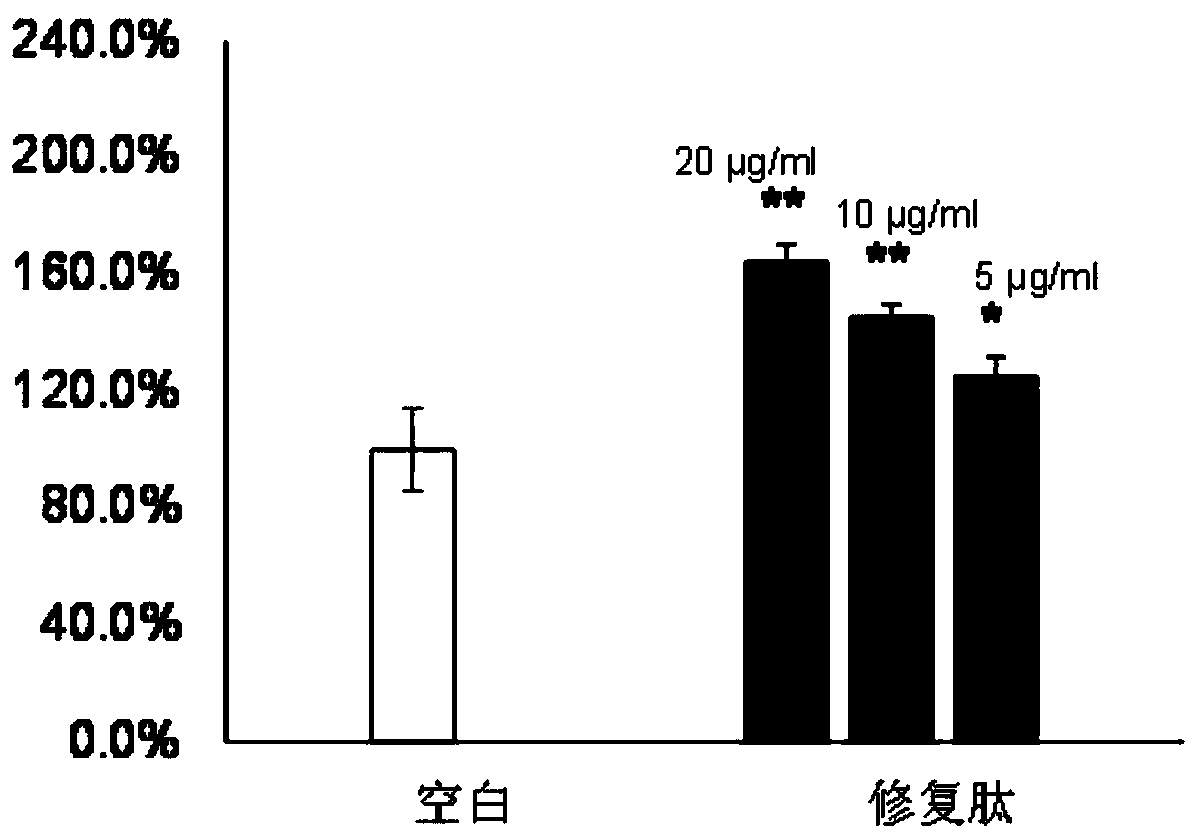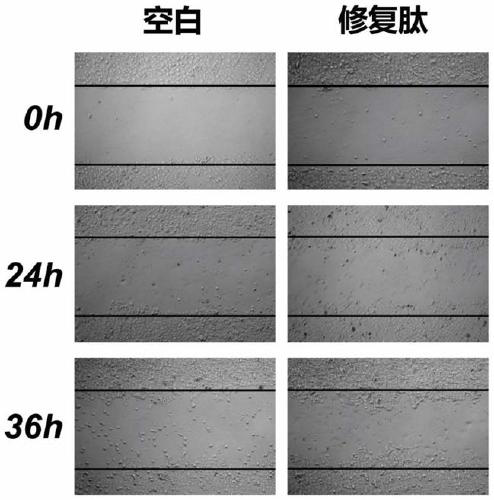Drosophila melanogaster polypeptide for promoting tissue repair as well as preparation method and application thereof
A tissue repair, Drosophila technology, applied in the field of active polypeptides, active polypeptides that promote tissue repair, can solve problems such as unclear functional components, and achieve the effects of improving skin beauty, promoting proliferation and migration, and good stability.
- Summary
- Abstract
- Description
- Claims
- Application Information
AI Technical Summary
Problems solved by technology
Method used
Image
Examples
Embodiment 1
[0030] Embodiment 1 The preparation method of Drosophila repair peptide, which comprises the following steps:
[0031] (1) Preparation of fruit fly extract:
[0032] Take crushed or not crushed fruit flies as a whole, add 5 times the amount of 70% ethanol solution, reflux extraction twice, each time for 30 minutes, centrifuge, take the supernatant, concentrate and dry to obtain the fruit fly extract.
[0033] (2) Extraction:
[0034] Disperse the fruit fly extract concentrate with 70% methanol solution, add about 1 / 10 volume of chloroform, shake fully, after standing for 4 hours, discard the chloroform layer, concentrate part of the methanol solution, and dry to obtain the methanol extract part of Drosophila .
[0035] (3) Strong oxygen ion exchange resin (SCX) separation:
[0036] The Drosophila methanol extraction part that step (2) obtains is redissolved with 10mM ammonium formate solution (containing 25% acetonitrile, pH 2.7~3), and the sample SCX small column is loaded...
Embodiment 2
[0039] Example 2 The sequence analysis of the Drosophila repair peptide, which comprises the following steps:
[0040] Take the Drosophila polypeptide prepared in Example 1, and use nano-LC-ESI-MS / MS to analyze the amino acid sequence of the polypeptide. The mass spectrometry conditions are: ESI source, scanning mode: positive ion mode, and the first-level full scan range of the mass spectrometer is m / z 300~2000, the separation width is 3Da; the tandem mass spectrometry adopts the data-dependent secondary mass spectrometry scanning mode of the primary mass spectrometry, and sequentially selects the five ions with the highest ion intensity in the primary mass spectrometry for collision-induced dissociation (CID) secondary mass spectrometry mass spectrum. According to the obtained MS / MS spectrum, the amino acid sequence of the Drosophila repair peptide is: Ile-Glu-Lys-Arg-Ile-Pro-Phe-Ser-His-Asp-Asp-Arg-Leu-Gly, and the mass spectrum is as follows figure 1 shown.
Embodiment 3
[0041] Example 3 Synthesis of Drosophila Repair Peptide
[0042]According to the amino acid sequence obtained in Example 2, the dipeptidyl peptidase-4 inhibitory peptide Ile-Glu-Lys-Arg-Ile-Pro-Phe-Ser-His-Asp-Asp-Arg- Leu-Gly, the purity of the synthesized polypeptide is 98% by HPLC analysis, and the molecular weight determined by mass spectrometry is 1682.90Da, which is consistent with the retention time and molecular weight of the purified polypeptide, and the fragments of the secondary mass spectrum are consistent with the purified polypeptide fragments.
PUM
 Login to View More
Login to View More Abstract
Description
Claims
Application Information
 Login to View More
Login to View More - R&D
- Intellectual Property
- Life Sciences
- Materials
- Tech Scout
- Unparalleled Data Quality
- Higher Quality Content
- 60% Fewer Hallucinations
Browse by: Latest US Patents, China's latest patents, Technical Efficacy Thesaurus, Application Domain, Technology Topic, Popular Technical Reports.
© 2025 PatSnap. All rights reserved.Legal|Privacy policy|Modern Slavery Act Transparency Statement|Sitemap|About US| Contact US: help@patsnap.com



